Our January Featured Offers
At Swoop we proudly work with every operator in the Antarctic industry.
This means we can find you the latest deals and with our Price Match Promise you know you're getting the very best price.

Price Match Promise-We’ll match any price you find elsewhere for the same trip
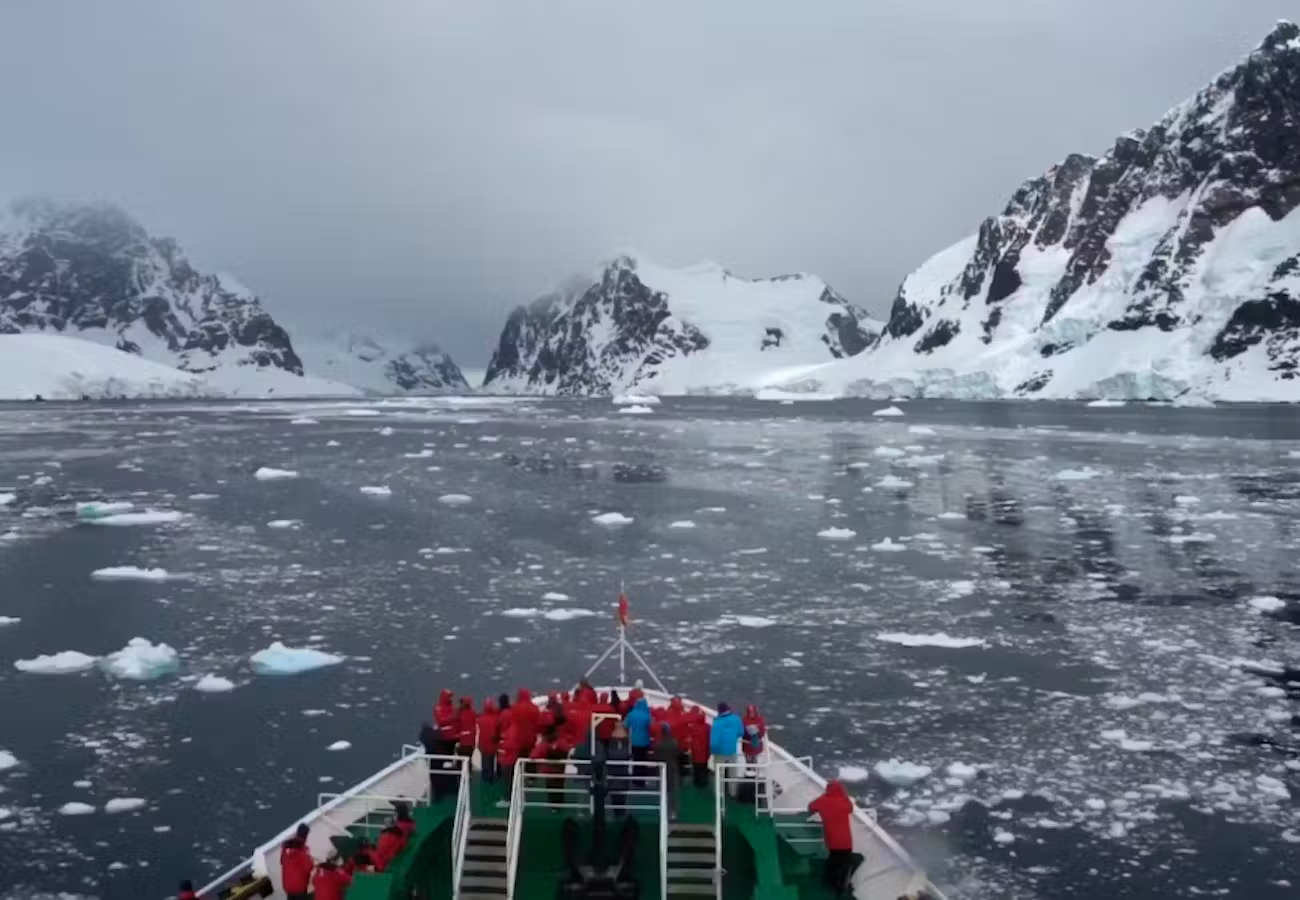
An expedition voyage by small ship to Antarctica is the antithesis of a traditional cruise. It's all about getting off the ship and up close to the exotic wildlife, icebergs and jaw dropping scenery - prepare for a sensory assault like no other destination.
At Swoop we proudly work with every operator in the Antarctic industry.
This means we can find you the latest deals and with our Price Match Promise you know you're getting the very best price.

Price Match Promise - We’ll match any price you find elsewhere for the same trip
Swoop has catered for travellers of every group size. Whether you’re adventuring solo or bringing a group of over 100. We can help.
So, you've made the decision to go on an Antarctica expedition. The next important step is to decide which cruise to Antarctica is best for you. There's a vast, tantalising choice of different options open to you - ranging from 6 to 30 days in duration - travelling either by ship or opting to fly:
With many years of experience, Swoop is adept at helping match our customers to exactly the right Antarctic trips.
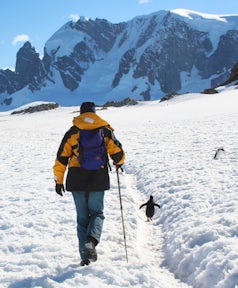
Choosing when to visit Antarctica is a crucial part of the planning process. Once you've decided which year you plan to travel, the next step is to work out the actual timing of your visit.
Firstly you need to be aware that Antarctica is only accessible to visitors between November and March, and that these months are split into two seasons, with ‘High Season’ being the most popular and expensive time to travel:
It's then important to be aware of the distinctive weather and wildlife characteristics of each month, as the timing of your trip will heavily influence what the wildlife is doing then, and local ice and weather conditions.
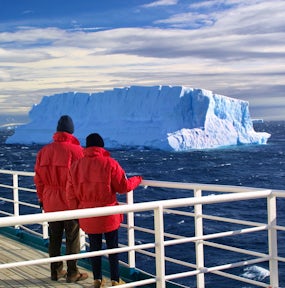
The early explorers had no option, and were grateful for whatever vessel they could commission, but modern day Antarctic visitors are spoilt for choice. Not only can you choose your mode of transport to get there – by either sailing by ship or getting a flight to Antarctica– but there’s also a wide variety of boats, from former Russian research vessels to luxury yachts boasting 24/7 butler service.
Given the considerable amount of time which you’ll be spending on the ship, it's well worth investing the time to finding exactly the right one.
Discover more on getting to the white continent.
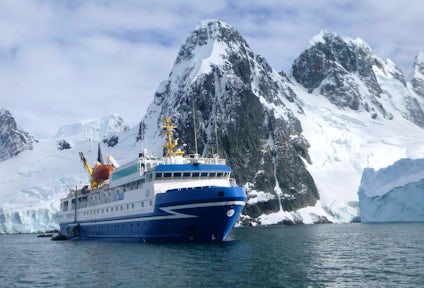
Prepare to be busy on an Antarctic cruise! Once you’ve arrived in Antarctica the backbone of each day is taken up by the off-ship excursions, of which there are normally two daily of between 2-3 hours long. These are either ‘landings’, where you go ashore to visit a penguin rookery or a place of historic interest, or a zodiac cruise when you’re on the lookout for wildlife and photographic opportunities.
There are often optional adventure activities – including kayaking and camping – as well as the ‘Polar Plunge’ and a programme of lectures delivered by the expedition team.

Kayaking on the Antarctic Peninsula
A trip to Antarctica is a big ticket item in anyone’s book, so it’s important to have a firm understanding of the likely costs before you start getting too carried away.
Swoop can help to guide you.
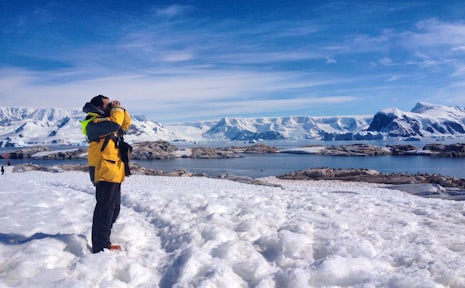
Antarctica Cruises trips scored 4.5/5 from 1244 reviews
10/10 - It’s an experience I will recollect for the rest of my life. Antarctica is pristine and beautiful. Read the full review
Travelled: March 2025
Naga Ganesh Kumar Vijayarangam - UK
10/10 - It was truly an incredible trip! The ship was great, I met incredible passengers and staff, the expedition team was amazing and so knowledgeable! Read the full review
Travelled: March 2025
Kimberly Cox - USA
10/10 - It was simply perfect and something I will treasure forever. Read the full review
Travelled: March 2025
Sarah Beasley - UK
We were greeted by 4000 lbs elephant seal 'teenagers', penguins and birds. And we had an almost surreal feeling of wow, we actually made it here... and for my wife, it was a step onto land that ended an odyssey to touch all 7 continents! Read the full review
Travelled: March 2025
Rajesh Ramsukh - Canada
10/10 - Swoop explained everything that would be needed for the trip, helped make arrangements. First class all the way. Informative, patient staff - all questions were answered. Read the full review
Travelled: March 2025
Joy Anna Flynt - USA
10/10 - I wish I could have just teleported all my friends and family there to experience what we experienced. I think I'm still processing just how fantastic and life changing it was. I'm still lost for words, it was everything I'd hoped and more! The lectures, the staff, the food, the wildlife, the memories. I could go on for days about how incredible it was! Read the full review
Travelled: February 2025
Lesley Anne McIntosh - UK
As we traveled through the Drake Passage, icebergs started to appear and we knew we were close. Nothing could have prepared us for the astonishing beauty of Antarctica. It the most beautiful place I’ve ever been. Read the full review
Travelled: February 2025
Kaaren Gotwals - USA
This trip was truly life affirming. From the scenery to the wildlife to meeting new wonderful people... it just kept giving and giving... I actually cried when I left the ship. I loved EVERY second and only wish I could go back and do it all again. Read the full review
Travelled: February 2025
Sascha Ann Heeney - UK
10/10 - Easy to deal with, communication very clear and easy to get in touch with the Swoop rep with our questions. Read the full review
Travelled: February 2025
Don Rogers - USA
I have never enjoyed cruises but this is really the only way to step on Antarctica. The expedition style and the quality/finishes/food were better than any ship I have been on before. It made me willing to go on a cruise again.
Travelled: February 2025
Ronald Gerbrandt - Canada
10/10 - Swoop organized a great trip to a great location. The trip was very well planned every step of the way, which eliminated the stress of traveling. Swoop made sure we were prepared with their extensive information. Read the full review
Travelled: February 2025
Guy Regalado - USA
10/10 - Everyone I dealt with at Swoop was extremely knowledgeable and friendly. They listened to me and helped find the right solution. They were prompt in their replies and walked me through the entire process. Nothing was overlooked and I felt completely taken care of. Read the full review
Travelled: February 2025
Michele Krantz - USA
Swoop knows Antarctica well and provides excellent advice. Read the full review
Travelled: February 2025
William Atkins - USA
10/10 - Swoop helped me quickly identify the Antarctic cruise that fit my desires, schedule, and price. Also adding on a Patagonia component made the trip more rewarding. Read the full review
Travelled: January 2025
Graham Meech - USA
The size of the ship and number of guests was just right. We met a lot of wonderful people which included the guests and also the exceptional expedition team. Read the full review
Travelled: January 2025
Sharvari Sundeep Gulrajani - India
Expedition is not a “trip”, it’s an experience!!!! Wouldn’t have changed anything! Wanted to do this trip for over 20 years and even when Mother Nature changed the plan, the team came through and made it amazing! Read the full review
Travelled: January 2025
Kathryn Filipek - USA
If you’re considering this trip, don’t hesitate. You will bring home lifelong memories. Read the full review
Travelled: January 2025
Robin Schelstraete - USA
10/10 - I think for me Swoop was heaven sent. I cannot wait to book my next adventure via Swoop and I can't recommend enough.. YOU GUYS ARE JUST AWESOME!! Read the full review
Travelled: January 2025
Shailesh Agarwal - India
The ship, the crew, the staff on board, and the expedition team were over the top wonderful! We felt valued every step of the way! Read the full review
Travelled: December 2024
Barbara McKinnon - USA
Swoop did a great job helping pick the right trip for us, and all the materials were nicely organized. We seemed to have a better idea on some things than other passengers (e.g. mountaineering equipment requirements). Read the full review
Travelled: December 2024
Logan Glickfield - USA
Swoop helped us prepare for the trip, what to expect, and helped us arrange safe transportation to and from the airports in Argentina. Our representative helped us select a room that would potentially reduce seasickness, recommended clothing options, and provided personal experience to help us make our own decisions about this adventure. I was very thankful for the transportation especially. It was wonderful to not worry about getting from point A to point B after long travel days. Read the full review
Travelled: December 2024
Cara Stombock - USA
10/10 - Swoop found my son and I the expedition that perfectly fit our request - maximum shore time in as small a ship as would fit within our budget. Read the full review
Travelled: December 2024
Drew Wilson - USA
The entirety of the total experience has left a feeling of awe and a bit of magic. Read the full review
Travelled: December 2024
John Norton Rampe - USA
Advice? “JUST DO IT”. It will exceed all your expectations. Fantastic time! Read the full review
Travelled: December 2024
Linda Coats - USA
10/10 - This was more of the Antarctic experience than we could have hoped for: the expedition leader and ship captain were communicative as they responded to ever-changing weather conditions, ensuring every landing was unique. The landscapes were otherworldly, the wildlife so varied, and the science and history lectures grounded the entire experience in the broader context of how Antarctica is changing. Read the full review
Travelled: December 2024
Jonathan Carroll - USA
10/10 - We are so appreciative of the advice we received before booking our expedition, and of the guidance and assistance we received from every moment after - we could not have made this happen without Swoop's help! Read the full review
Travelled: December 2024
Jonathan Carroll - USA
10/10 - Swoop did an excellent job communicating to book the trip and providing information about the journey to help us pack and have reasonable expectations about what we may experience. Read the full review
Travelled: December 2024
Jacqueline Arnett - USA
10/10 - It was nothing like I expected. The wildlife and the terrain was so beautiful and the expedition crew was really helpful and made our trip much more memorable. Read the full review
Travelled: November 2024
Mohammed Alkaabi - Qatar
10/10 - The team created a community. Then educated us, at a remarkable level, on the adventures we were having. Setting foot on the snowy and icy land with its native inhabitants, decorated by icebergs float, were crowning moments. Read the full review
Travelled: November 2024
David Allen - USA
10/10 - The entire trip was completely thought out and organized, it felt like every single rock was turned to make sure everything was taken care of. I felt completely safe the entire time. The staff were incredibly informative and lots of fun to interact with. Read the full review
Travelled: November 2024
Julia Hajdukovic - USA
10/10 - So many opportunities to get off the ship and experience Antarctica. Read the full review
Travelled: November 2024
Cory Bockus - Canada
10/10 - Assistance in planning the entire experience was exceptional - Swoop helped with all reservations and transfers - made both going and coming home as painless as possible! Read the full review
Travelled: October 2024
Arthur Clark - USA
The expedition team was more knowledgeable than I thought. I didn't know they would be the entertainment, but they were. I left there more knowledgeable about seals, penguins, whales, clouds, and krill!! The lectures were a great way to make you think about what is in the oceans, where you live, and everywhere. Read the full review
Travelled: February 2024
Debra Sharkey - USA
Most memorable moment? Seeing a bright, sunny clear day on the Antarctic Peninsula full of penguins, seals, and humpback whales with the high plateau in the distance and sculpted icebergs floating by along with my family. Read the full review
Travelled: January 2024
Rebecca Archer-Knepper - USA
Honestly, every single thing about this trip was incredible. My husband and I travel a lot, but this was hands down the most incredible experience we've ever had. Read the full review
Travelled: January 2024
Elyse Doherty - USA
10/10 - I'm thankful I was introduced to a variety of options, and once we established which activities were most important we had settled on a trip. Read the full review
Travelled: January 2024
Kelli Alexander - USA
My most memorable moments were experiencing wildlife that has absolutely no fear of humans. Penguins will walk right up to you! For their protection, you have to stay 5 meters away from all wildlife on land, including nests. However, if you're standing where a penguin wants to go, it has no qualms about waddling right past you! Seals will sleep on ice floes right next to zodiacs, whales will approach kayakers, and skuas and albatrosses will fly so close to you that you could almost touch them. Read the full review
Travelled: January 2024
Lauren Pecarich - USA
10/10 - Swoop was amazing and so easy to work with. Any time we had a question, we were able to email our travel planner and they would respond quickly and with all of the information we needed. They were clear and communicative, and by the time our trips arrived, we felt comfortable and confident. We also LOVED the webinars, they were a very helpful and informative way for customers to ask questions. Read the full review
Travelled: January 2024
Elyse Doherty - USA
This trip was the trip of a lifetime and I’m already trying to find a way to get back someday. It’s life changing in some ways I already know… and some that I have yet to realize. Read the full review
Travelled: January 2024
Gina Vickrey - USA
Most memorable moment? I don't know if I can pick one. The BBQ on the deck, the zodiac tour in the snow with humpbacks, polar plunging, the penguins, the Lemaire Channel for sure! Every day had something shocking and wonderful and glorious and we really tried to just experience each day. We lucked out with weather and lack of motion sickness, so the entire trip felt charmed. Read the full review
Travelled: January 2024
Courtney Caldwell - USA
Using Swoop took the guesswork out. Resulted in a trip of a lifetime! Read the full review
Travelled: January 2024
Anne Kinzie - Canada
The expedition team were first rate. They truly made the whole experience. I was very impressed with the variety of experts and they were all very enthusiastic and passionate about their respective fields. Read the full review
Travelled: January 2024
Nathalie Parent - France
10/10 - Swoop were easy to contact via email with any questions or help with additional reservations. Read the full review
Travelled: January 2024
Amy Viltrakis - USA
The expedition team was INCREDIBLE. They were the perfect combination of friendly, knowledgable, and hard working. You could tell they were all excited to be there and share everything with us. Read the full review
Travelled: January 2024
Aaron Moskal - USA
Most memorable moment? Landing on the 7th Continent! The surreal feeling of like walking side by side with a David Attenborough cameraman filming for the Frozen Continent documentary. Read the full review
Travelled: December 2023
Cheng Keat Lee - Malaysia
The smaller-scale of the ship and orientation towards wildlife and excursions really made the experience sensational. I cannot imagine expending the effort and money to travel there only to see it pass by my window/balcony. Read the full review
Travelled: December 2023
Jeff Fisher - USA
Highlights include: an exhilarating polar plunge, seeing a beautiful Antarctic sunset, camping on Antarctica, seeing the majesty of Brown’s Bluff, every time I got to see penguins swimming. Read the full review
Travelled: December 2023
Anna Victoria Sasaki - Malaysia
10/10 - It was beyond our expectations. We have traveled all over the world and this was the most interesting and scenic trip we have taken. We loved the abundance of penguins, humpback whales, and we saw dozens of killer whales in one afternoon. We wanted an interactive experience and received more than we expected. Read the full review
Travelled: December 2023
Scott Burbank - USA
I've been on many 'cruises' and felt pampered, but this was an expedition, and the crew knew how to take care of us, show us amazing things, and keep us safe. Read the full review
Travelled: December 2023
Deb Smith - USA
You have to go to Antarctica; while I have enjoyed documentaries and films about the southern continent, only by going to Antarctica can you see what it is all about. My only disappointment was having to depart the ship all too soon. Read the full review
Travelled: December 2023
Stephen Rathbun - USA
This entire experience was a once in a lifetime trip that will never be forgotten! Read the full review
Travelled: December 2023
Marilyn Burbidge - Canada
I was well prepared (actually over prepared in that I brought too much clothing) and my excitement level was incredible. I had been saving up money and dreaming of this trip for many many years. It was all that I expected and more. Read the full review
Travelled: December 2023
David Wall - Canada
The vastness of Antarctica - the landscapes of mountains, icebergs were mind blowing. And then add in amazing wildlife - just wow! There truly aren't adequate words. Read the full review
Travelled: December 2023
Heather Jane Chadwick - USA
The trip was a great experience and one we had been looking forward to for a lifetime. The comforts of the ship, the professionalism and courtesy of the crew and the expedition leaders, the first class quality food and the awesome beauty of the Antarctic was incredible. Read the full review
Travelled: December 2023
David Wall - Canada
10/10 - Going to Antarctica is not like a regular vacation. It takes detailed planning to a place most people haven’t gone. Swoop helped us every step of the way from emails, calls, webinars, and the Adventure Planner. Read the full review
Travelled: December 2023
Erin Wall - Canada
10/10 - I got to see and learned so much during this trip. The expedition team answered my questions and helped me throughout the trip. Read the full review
Travelled: December 2023
Nidia Eileen Diaz - USA
One day we were on the zodiac, and our guide - unfortunately I don't remember who it was! - had us close our eyes and be silent for one minute. When I opened my eyes I felt like I entered a new, amazing, world of peace and love. Hard to describe, but so powerful. Read the full review
Travelled: December 2023
Leslie Fulton - USA
The trip was something I had always wanted to do, but never became a reality. I don't think people understand how beautiful and quiet it is. It was a time for reflection and to enjoy a place where mankind has not totally destroyed everything. The adventures were one of a kind and the people who helped make the trip unique were also wonderful. Read the full review
Travelled: December 2023
Susan Merryfield - USA
There were a number of memorable moments. First seeing the icebergs go by my suite window, or watching whales playing. Every day while in Antarctica, there was something special. Read the full review
Travelled: December 2023
Susan Merryfield - USA
Sitting quietly in a zodiac with the engine turned off watching whales. Polar plunge into the Antarctic, surfacing and seeing a horizon of beautiful glaciers and mountains. Read the full review
Travelled: December 2023
Tamra Anne Westbrooks - USA
There is no way to describe Antarctica without being there. Read the full review
Travelled: December 2023
Patrick Auer - USA
Most memorable moment? Standing on a ridge on the Antarctic Peninsula with the sun shining down. Standing next to a penguin colony with no civilization close. The water smooth with ice floating. Read the full review
Travelled: December 2023
Michelle Anderson - USA
The beauty of nature. Seeing wildlife I’ve never seen before! Antarctica was breathtaking! Read the full review
Travelled: December 2023
Diellza Marku - USA
10/10 - Beautiful weather, beautiful scenery, amazing staff and expedition crew. Truly this was the best trip we have ever taken. Read the full review
Travelled: November 2023
Jeni Ness - USA
10/10 - The impartial advice received from Swoop was very helpful in picking the right expedition with an exceptional cruise operator. Read the full review
Travelled: November 2023
Craig Murata - USA
10/10 - The Swoop team was responsive and helped us make the best decision based on the type of trip we wanted to take. Read the full review
Travelled: November 2023
Sarah Yip - USA
The trip was truly life changing for us. There are memories imprinted in our minds forever. Read the full review
Travelled: November 2023
Fiona McConnell - Canada
Extremely hard to choose one memorable moment when the entire trip was awesome. Moment to moment was an adventure. Huge thanks to each and every person involved in making our Antarctica voyage a true treasure. Read the full review
Travelled: November 2023
Judith Tobery - USA
Antarctica is a trip of a lifetime. Pictures just don't capture what you see and feel in your heart. Read the full review
Travelled: November 2023
Judith Tobery - USA
If you have been thinking about taking this trip, you should do it. You won’t regret it. Read the full review
Travelled: November 2023
Beth Collins - USA
10/10 - Absolutely the expedition holiday of a lifetime. Right from the planning to the farewells, the entire team all made sure that your every need was met. Read the full review
Travelled: November 2023
Penelope Simcox - New Zealand
The first wake up call, opening the windows to see Antarctica for the first time.. it felt like being a kid at Christmas! Read the full review
Travelled: March 2023
Libby Chamberlain - UK
The sheer scale and remoteness of the continent. Tranquil and the fact that animals can survive and indeed flourish in such a harsh environment. The glaciers and geomorphology were inspirational. Read the full review
Travelled: March 2023
Andrew John Griffiths - UK
10 / 10 - Swoop coordinated my trip in expert fashion…every step along the way. The ship team was extraordinary…experienced, knowledgeable and fully capable. 11 out of 10. A+++ Read the full review
Travelled: January 2023
Gene Piper - USA
The wildlife was extraordinary. I could have watched the penguins for hours and my photos are wonderful but no substitute for observing the animals with my own eyes. Read the full review
Travelled: January 2023
Rebecca Klein - USA
The opportunities to see, hear, and move among the penguins, sea birds, seals, and whales was truly special. We learned so much, experienced so much it is hard to pick a favorite moment. Many truly 'close encounters.' Read the full review
Travelled: December 2022
Michael Cox - USA
My trip was full of positive emotions, new friendships and precious memories, I was genuinely sad when it was over. I would highly recommend this voyage to anybody, it was totally worth it, I loved it!!! Read the full review
Travelled: December 2022
Viktoria Tsvetkova - Bulgaria
10/10 - Very happy with Swoop. Trip was well organized. Great communication. Helpful people. Company also cares about the environment - something which anyone who goes to Antarctica will likely become a bigger focus in their life. So great company, cares about its clients, its people and the world in which we live. Read the full review
Travelled: December 2022
Marc Ganz - USA
10/10 - Swoop made the booking process easy and professional. They assigned a point of contact that made the preparation for the trip personal by answering all questions quickly and thoroughly. Read the full review
Travelled: December 2022
Erwin Perl - USA
Come with an open mind and heart, and take advantage of every opportunity to get to know Antarctica. Read the full review
Travelled: December 2022
Mary Cunningham - USA
It's hard to put into words - but feeling such camaraderie and sharing awe with others heightened my appreciation of the environment, my respect for humanity and a sense of optimism or positivity rather than the negativity often experienced from the news. Read the full review
Travelled: December 2022
Linda Nolte - USA
Antarctica landscape is not what one would expect. It is very 3 dimensional with white glaciers on granite rock peaks, bright blue skies and waters. Many icebergs are nature's work of art. Weather can go from rain, to sleet, to snow in one morning. Read the full review
Travelled: December 2022
Alex Chou - USA
I enjoyed waking up to the sight of icebergs and getting the opportunity to be so close to wildlife like the seals and penguins. Read the full review
Travelled: December 2022
Anjulika Sahgal - UK
Walking among our first gentoo colony and seeing how clumsy they are on land but graceful they are in the water - and the sun was shining, it felt so warm that everyone was stripping off their layers! Read the full review
Travelled: December 2022
Alison Kubinski - USA
The first sight of the Antarctic islands was overwhelming and such a great feeling that we had actually made it! Then stepping foot on land! So epic! I very much enjoyed daily zodiacs to land and the hikes we were able to do. Read the full review
Travelled: November 2022
Kelly DeBey - USA
10 - It was so much more than "just a cruise." Activities were safe and allowed for participation regardless of your age, ability, etc. The educational aspects of the region, the wildlife, the history, the current processes in place to "manage" the area and preserve its unique wild state - everything was phenomenal !!! Read the full review
Travelled: November 2022
Shelley Springer - USA
10 - As a professional writer, I take no pride in saying words fail to describe the majesty of Antarctica. Read the full review
Travelled: November 2022
Scott Hogenson - USA
Choose the smallest vessel as possible, more intimate, more environmentally friendly and it can reach places other larger ships can't. Read the full review
Travelled: November 2022
Helena Polackova - UK
Loved the zodiac excursions. The zodiacs provide intimate access to locations the ship cannot reach. Zodiacs and shore excursions make all the difference in an Antarctic journey. I couldn't imagine simply viewing just from the ship. Read the full review
Travelled: February 2022
Scott Hunter - USA
Cabin was gorgeous; loved the balcony. The food was delicious and the catering staff and cleaning staff were excellent - everyone was friendly and helpful. Read the full review
Travelled: February 2022
Lauren Woosey - UK
I love knowing that there is a place at the bottom of the world that is covered with ice and penguins, and that my own eyes have seen it. It is both comforting and inspiring. Read the full review
Travelled: January 2022
Stephanie Krolick - USA
The trip was full of memorable moments - for the first three days, it was just one awe-inspiring moment after another, and really we continued to be surprised and delighted up until the last hour. Read the full review
Travelled: January 2022
Stephanie Krolick - USA
The orcas appearing during the whale talk, the baby humpback breaching off the bow of the zodiacs, the polar plunge, watching from the outriggers as the the boat cut through the ice, drinking Macallan with ice fresh from a berg, having an impromptu dance party with my husband on top of a volcanic cinder cone. It was just a super trip from beginning to end. Read the full review
Travelled: January 2022
Stephanie Krolick - USA
We were lucky regarding weather and conditions but the team helped make the luck by monitoring the weather and adjusting the schedule to maximize the experience. Read the full review
Travelled: January 2022
Mark Golan - USA
Great boat. Perfect combination of being large enough to have amenities such as the fitness room, library, and spa while being small enough to be personal and allow for comfortable offshore excursions. Still new and the room and other facilities felt modern and comfortable. Read the full review
Travelled: January 2022
Mark Golan - USA
Most memorable moment: clear blue skies, zero wind, flat ocean with icebergs floating around everywhere, in a zodiac with penguins popping up all over us, and a seal belly-flopping up on an iceberg 20ft from us Read the full review
Travelled: January 2022
Todd Mackey - USA
I waited over two years to go on this trip because of Covid. It was well worth the wait. Everyone who has ever thought of going to Antarctica and has the means should go. Go now while you still can! Read the full review
Travelled: December 2021
Kent Kimball - USA
Overall a magical experience. Antarctica did exceed anything we had imagined or seen in pictures or video. No way to encompass the experience of stunning sights without being there. So big, so pristine. As we told some fellow passengers: Disney talks about magic in Orlando, but that is fake magic. Antarctica is the real magic on Earth. Read the full review
Travelled: December 2021
Mike Walcher - USA
The zodiac excursions were great-lots of icebergs, seals, penguins, and whales. We even cut the engine to enjoy the "silence" of the ice - magnificent. We always felt safe; they explained what to do (and why), and reminded us how to enter and exit the craft. Read the full review
Travelled: December 2021
Diane Walcher - USA
Swoop has been absolutely fantastic! I will not only recommend Swoop wholeheartedly, but will surely return as a customer for future voyages. Read the full review
Travelled: December 2021
Mohit Kallianpur - USA
My favorite encounter was having a very curious penguin come up and bite my camera lens. Wow! Read the full review
Travelled: December 2021
Gordon Pickering - USA
I will keep Swoop in mind for my future adventure trips and also recommend Swoop to my friends definitely. It's a wonderful experience with Swoop. Thank you again for recommending and helping us to get the last cabin at that tight time before the trip's departure, so we experienced this unforgettable Antarctica trip.
Travelled: January 2020
Jinyu Xu - United States of America
I loved our cruise to Antarctica. Every landing was a highlight and it is definiely the best place I have ever visited. Read the full review
Travelled: December 2019
Sabine - Austria
The mix of people on the ship was refreshing! Different ages, nationalities (16 on our ship) and different walks of life. So many inspiring people! Read the full review
Travelled: February 2019
Elisabeth Eppich - Canada
Working with Swoop was a delight. They were so helpful and provided such good advice and useful detailed information. Read the full review
Travelled: February 2019
Ralph Pollack - United States Of America
Antarctica transcended me to a new, almost surreal, world of majestic landscapes and wildlife, unlike any other place that I had experienced. Read the full review
Travelled: February 2019
Dennis Roy - United States Of America
My goal was to step foot on the Antarctica Continent to help fulfil my bucket list of visiting all 7 continents. It was an awesome experience - to see, first hand the beauty of this part of our world. It exceeded my expectations. Read the full review
Travelled: December 2018
Lula Whitworth - United States Of America
It far exceeded my expectations. To go to a place so remote and so untouched by the rest of the world truly shows how beautiful the planet really is! Read the full review
Travelled: November 2018
Kaitlyn Rye - United States Of America
I was so elated once we embarked on our epic journey to South Georgia and feel ever so lucky to hit the big 3 colonies - St Andrews, Gold Harbour and Salisbury Plain. I am now proud to be part of a statistic shared of only 0.04% of the population to have visited South Georgia. Read the full review
Travelled: November 2018
Jo Cheung - United Kingdom
Kayaking made it for me. My biggest surprise was beaching on an iceberg and a snowball fight!
Travelled: February 2018
Angela - UK
If you have never been there, there is no way of preparing for the impact of being there. The untouched, natural beauty, the mighty icebergs, the silliness of the penguins. You will be spending hours just sitting in one spot adoring the view.
Travelled: January 2018
Zoltan & Stephen Nemeth - Florida
We've traveled to 87 different countries, and this was without a doubt our favorite destination. Of all the cruises we've been on, we spent more time out on our balcony on this trip than all the rest combined. The scenery changes so much, you don't want to miss anything. We saw countless whales from our balcony. And icebergs of every shape imaginable.
Travelled: December 2017
Chris & Amy - Florida
I think the only prerequisites for enjoying this trip are curiosity and realistic expectations about shipboard life: understanding that it is an expedition, not a cruise.
Travelled: December 2017
Marc - Florida
I have visited 89 countries and islands and Antarctica was my final continent. Without doubt, the Antarctica and Falkland Islands trip was the best experience, holiday and adventure I have ever had.
Travelled: February 2017
Nick - UK
John made this very hard decision so much easier by reassuring me of the incredible experience awaiting me and explaining every detail of the trip beforehand. If it wasn’t for John, I seriously do not know if I would have had the courage to go on this trip alone.
Travelled: February 2017
Jeff - Arizona
In a word, it was sensational. Everything was terrific: the ship, the "hotel" and the expedition team. You (John) are greatly loved among multiple crew folks. And we share that enthusiasm for you because your natural joy is infectious.
Travelled: February 2017
Larry and Julie - California
Swoop was phenomenal! I am so happy and grateful I booked with Loli and the Swoop team. Loli answered all of my questions and due to her first-hand experience with the trip, she was able to offer terrific guidance and helpful insights. I felt completely looked after and prepared for my trip.
Travelled: January 2017
Colette - California
From the first moment we booked our trip to Antarctica with Swoop, everything went so well. You can read about Antarctica, people can tell you about it, you can look at countless images, but it is so much more beautiful in reality.
Travelled: January 2017
Kim - Australia
The level of expertise and knowledge that Alex has is incredible and he helped us select the perfect trip for our needs and expectations. I've never had such good service.
Travelled: December 2016
Declan - UK
Swoop was fantastic. We were provided with great service, efficient and quality responses to our many questions. Swoop found us the perfect expedition to match our interests and budget. Alex even followed up with us throughout the process and called us the day of our departure to wish us a wonderful trip.
Travelled: December 2016
Bryce - Canada
We were extremely fortunate to link up with Swoop. We planned this trip at the last minute and I do not believe we would have found the right trip, right boat, or the right cabin. Loli knew that we were on our honeymoon and went out of her way to make sure we had the right cabin.
Travelled: November 2016
Ryan - Massachusetts
We are happy to say how wonderful our trip was to Antarctica. The experience was fantastic, the entire crew was very impressive, the equipment and ship were top notch.
Travelled: November 2015
Mike & Trish - USA

Expedition ship pushing through pack ice

A pod of whales, Antarctica

Resting Weddell seal with gentoo penguin looking on

Hiking over the snow at Peterman Island

Electric blue iceberg

Acrobatic gentoo penguin with fur seal pup beyond

Paddleboarding in Antarctica

The flukes of a diving humpback whale

Port Lockroy, home to the world's most southerly post office


Dramatic skies at Half Moon Bay
Price Match Promise - We’ll match any price you find elsewhere for the same trip
Cruises to Antarctica have a minimum age limit on certain ships, but there's certainly no upper age limit. As long as you are fit and healthy, and feel capable of clambering in and out of the zodiacs, you’ll be fine. The average age of Antarctic travellers is approximately 50-75 year old, however, this is falling with every season.
The majority of Antarctic cruises aren’t physically demanding and definitely fall into the ‘soft adventure’ category. Walking distances are fairly short, particularly on the Antarctic Peninsula, and when longer walks are available they are optional and will be offered alongside shorter ones.
For more active travellers, optional adventure activities (kayaking, camping, etc) are widely available on most voyages. There are also select departures like Basecamp Adventure specifically designed for the active traveller.
When deciding when to book your cruise to Antarctica, there are a couple of rules:
Rule No. 1: It’s never too early to book
Rule No. 2: The early mover gets the widest choice
To be confident of securing your first choice you need to be ideally booking 12 - 18 months in advance, or as early as the departure dates are released. The popularity and limited number of departures of Fly & Cruise and South Georgia cruises, in particular, make it even more important to start the booking process for these early.
This may seem excessive to those who don't typically plan this far ahead, but on an Antarctic trip when places aren’t infinite, the need to book early is crucial to avoid disappointment.
99% of Antarctic cruises depart from Ushuaia in Southern Argentina and Punta Arenas in Southern Chile. These are the main gateways to Antarctica and the Southern Ocean.
The Drake Passage has a reputation, and not without reason as approximately 30% of voyages experience rough weather, however, it can also be surprisingly placid too ('The Drake Lake').
The reality for the majority of our customers is that it's rarely as bad as it sounds, and it's certainly a 'price' well worth paying, but if avoiding The Drake altogether by flying to Antarctica is your preference, we have firsthand experience and can help.

The Peninsula is the classic way to experience Antarctica. Some of the best wildlife and most dramatic scenery can be found in this part of the Frozen Continent.
Discover More
Around 1 in 12 visitors to Antarctica arrive by air – this our guide on everything you need to know about flying to the White Continent.
Discover More
For the ultimate polar adventure, join a cruise that crosses the Antarctic Circle at 66 Degrees South and visit some of the most beautiful landmarks the White Continent has to …
Discover More
A jewel in Antarctica's crown, South Georgia is one of the world's great wildlife destinations: the Serengeti of the Southern Ocean
Discover MoreWe'll spend some time listening to your aspirations, then discuss the kind of experience that might suit you.
Next we'll discuss the options, shortlist the best trips for you and present you our impartial recommendations.
We'll place a 24 hour hold on your preferred option - without obligation - whilst we talk through the details.
This website uses cookies to ensure you get the best experience on our website. Privacy policy
We don’t charge a commission and there are no hidden fees. Just impartial, expert advice from the leading Polar cruise agent. Schedule a call with our Antarctic Experts today.




















